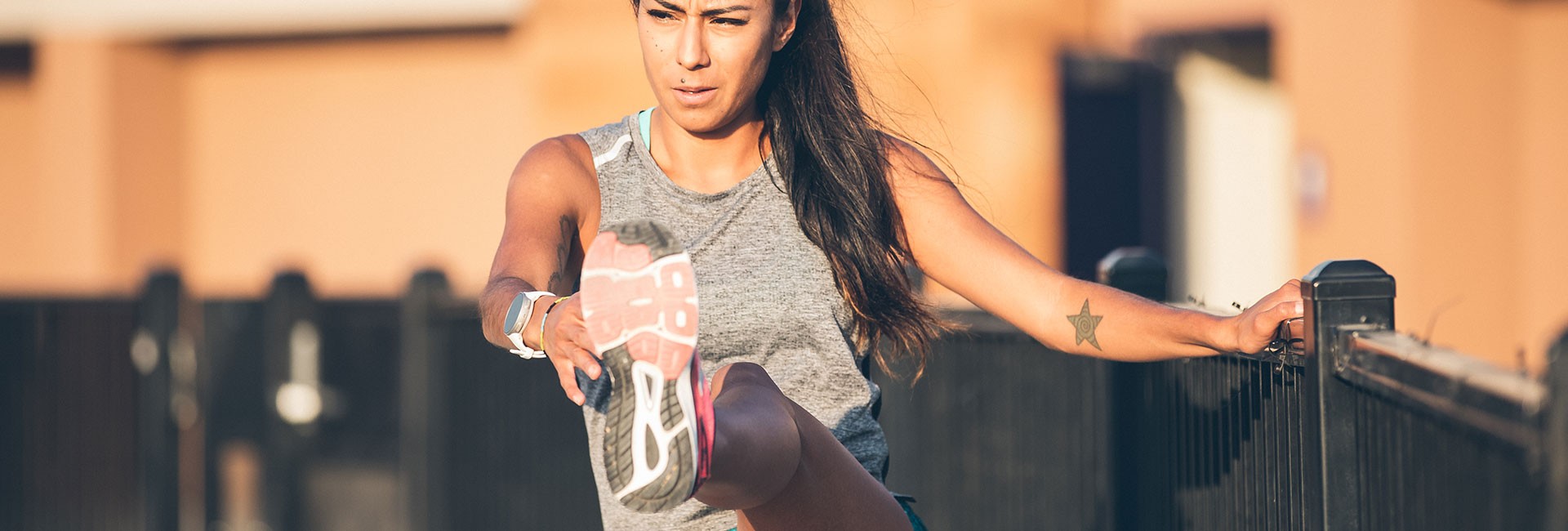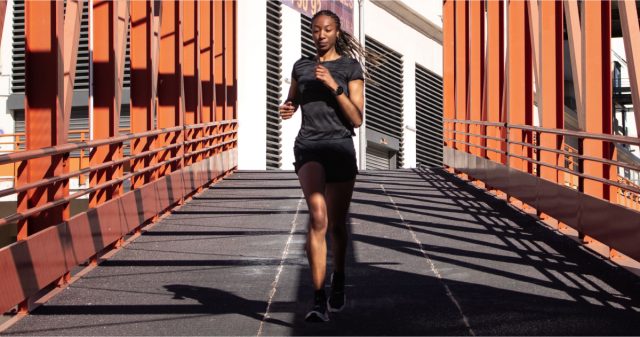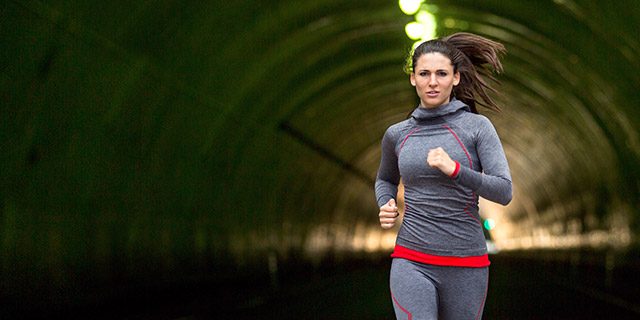I admit: I didn’t quite understand the importance of strengthening my hips until I was forced to undergo a hip arthroscopy. It reminded me that our bodies, including the muscles around our hips, work synergistically – if one muscle is outperforming another, trouble lurks.
What about you? Are you too focused on your feet?
Athletes and exercisers (particularly runners), listen up! You might have been able to get away with avoiding hip-strengthening exercises in the past, but running and exercising with weak hips is a disaster waiting to happen… trust me, I know.
Here’s some insight into why you should strengthen your hips for running and how to get started with some simple hip-strengthening exercises.
Stop Looking At Your Feet
It’s no news to any avid runner that foot-strike plays an important role in cadence, running efficiency, and ease. However, many experts agree that the emphasis placed on foot-strike has distracted runners from understanding the pinnacle starting point for great running technique – it’s all in the hips.
What’s the pinnacle starting point for great running technique?
A heavy focus on the feet, as opposed to the hips and torso, leads to runners prioritizing the ‘end of chain movement’ rather than looking at the beginning, and zoning in on where the stride begins.
It seems that we should pay more attention to the hips and their ability to extend with control because hip weakness can throw off stability and create excess movement in the hips and knees. It can also lead to problems down the chain, like shin splints, Achilles tendinopathy, and plantar fasciitis.
HIP Extension Over Flexion
Maintaining a neutral pelvic position is fundamental given the pelvis is a crossroad for forces in the body. If the pelvis falls out of alignment, or the hips are tight, then the trunk and legs can stop moving efficiently and adversely impact the running gait.
The pelvis is a crossroad for forces in the body.
When we run, the hips predominantly drive the extension pattern, they then help the gluteus maximus create momentum through the mid-to-late stance and drive us forward.
Unfortunately, if you have a relatively sedentary job, spend a lot of time in the saddle (triathletes), or waste an enormous amount of time sitting down commuting to work each day, your body becomes accustomed to the static flexion position.
Why does this matter?
Well, an excess amount of time spent in hip flexion won’t help you work on your hip extension which is vital for a strong running technique.
The Strong Alliance – The Core & Hips
Your core is married to your glutes when it comes to optimal running efficiency, and a weak core can quickly drive your hips and pelvis forward. This ultimately limits hip extension and impedes running adeptness. When your core is strong (and no, strong doesn’t always mean rocking 6-pack abs), then your pelvis, hips, lower back, and legs work in unison.
Strong doesn’t always mean rocking 6-pack abs.
Need a more convincing reason to work on your ‘abs’? Then consider that your core muscles help keep your torso upright and when your core is weak your hips, pelvis and upper legs don’t function optimally.
A runner whose hips are unable to remain aligned when they run is a perfect example of someone who has not learned the importance of the ‘hip core or ‘deep hip stabilizers.’ The ‘hip collapse’ emerges because of a weak core-hip connection and can simply be due to your core not knowing when it’s time to ‘switch on’ because it has never needed to, as compensating muscle groups are doing all the work!
In other words, a lack of deep core muscle strength has resulted in an increased workload for the hips and buttocks, creating knots and tightness. This also leads to poor pelvic posture and pain in the lower back.
In summary, a heightened concentration on foot-strike, too much sitting, and a weak core will inevitably result in hip complications.
To combat this, begin performing hip exercises 2-3 times a week minimum to strengthen your hips for running. Also, avoid prolonged sitting (stand-up desk anyone?) and don’t skip plank exercises post-run.
3 simple exercises to strengthen your hips for running
If you’re not quite sure how to start strengthening your hips, here are three simple hip exercises to kickstart your program:
1. Single-leg deadlift
Starting with your feet hip-distance apart, bend one leg slightly and kick your other leg back as you bring yourself parallel (or close to parallel) with the floor.
Come back up to standing, this is 1 rep, perform 2-3 sets of 12 on each leg.
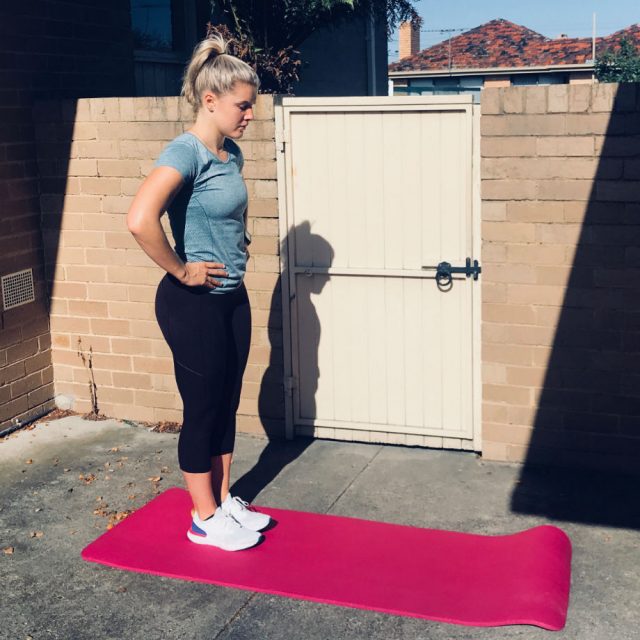
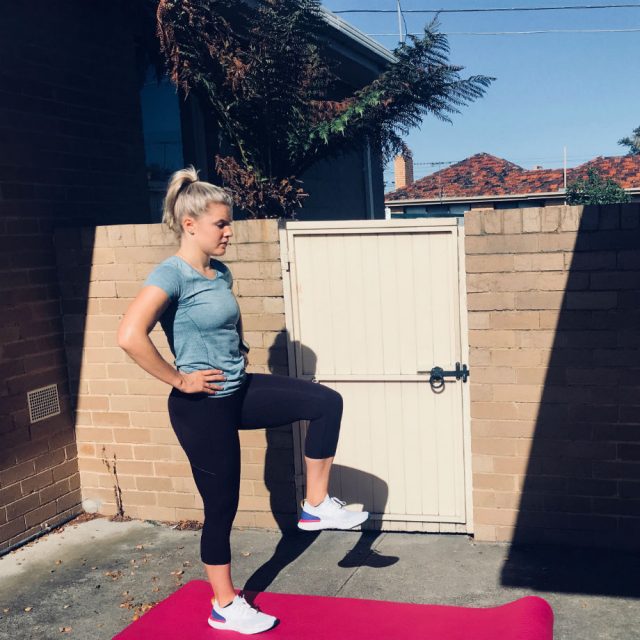
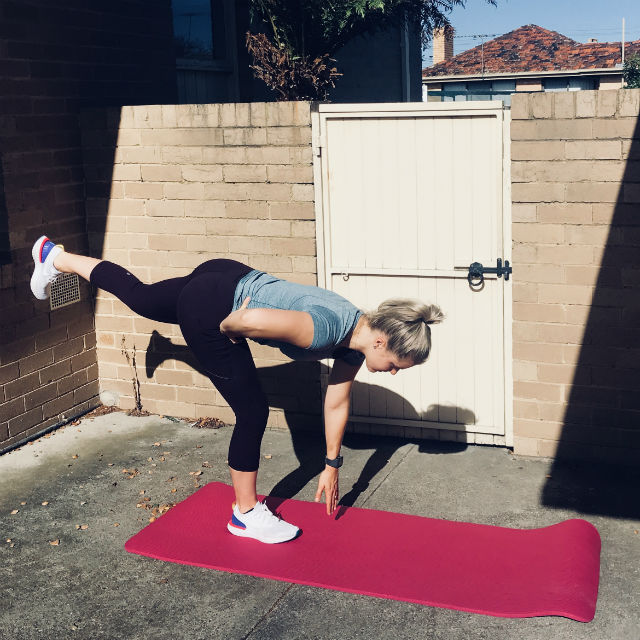
2. Side lying leg lifts
Working your oblique’s (outer abs), outer glutes (bum), and hips, this exercise is sure to strengthen your muscular strength and endurance.
Start on the floor lying on one side with your bottom arm extended and the other on your top hip. Then, lift your top leg upwards with control and back down towards the floor.
For more of a challenge, point the toes of your top leg towards the floor as your leg goes down and up (ouch!).
Aim for 2-3x sets of 30-seconds on each side.
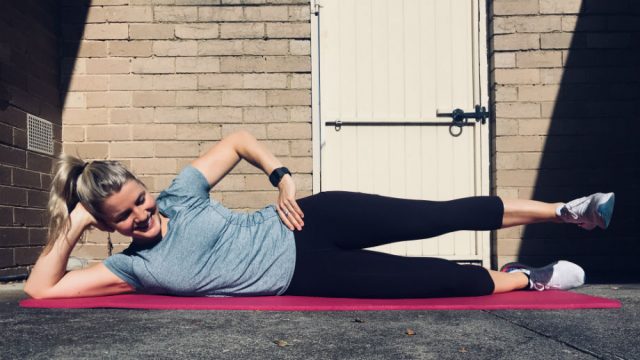
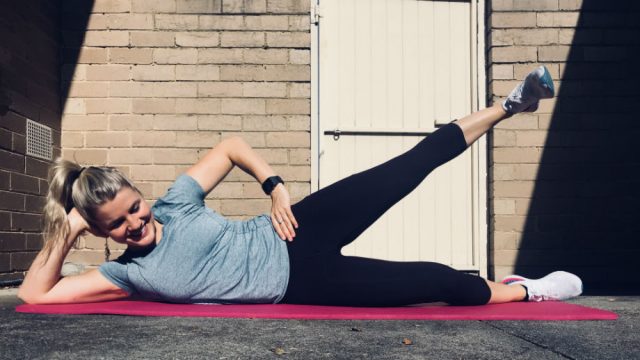
3. Single-leg hip bridges
This move is perfect to strengthen your lower back, glutes, and hips.
Begin on your back with one leg bent and the other extended, use the bent leg to drive your hips upwards until your back and bum form a straight line.
Then, come down to the floor and repeat. Ensure your pelvis does not rotate as you lift, and you are breathing out as you come up.
Don’t arch your back, make sure you tail-tuck your pelvis in and engage your core! Aim for 2-3x sets of 15 on each leg.
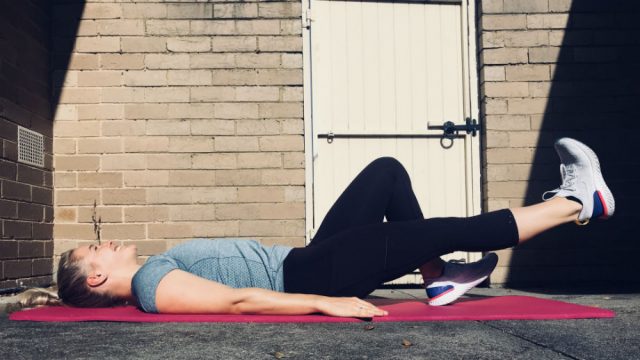
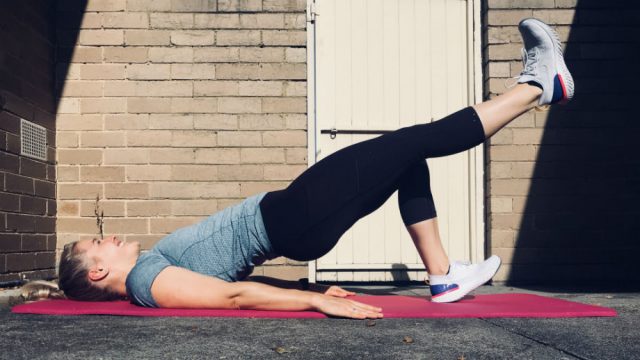
If you liked this post, don’t forget to share so that others can find it, too.
Or give it a thumbs up!
I like this article
Please note that the information provided in the Polar Blog articles cannot replace individual advice from health professionals. Please consult your physician before starting a new fitness program.
